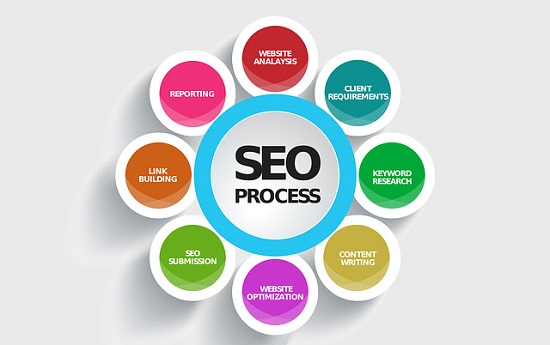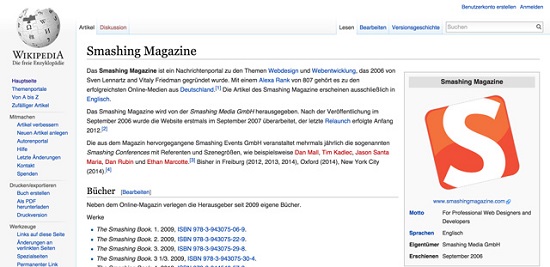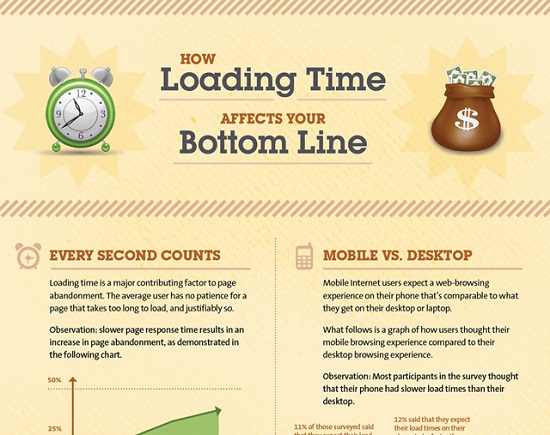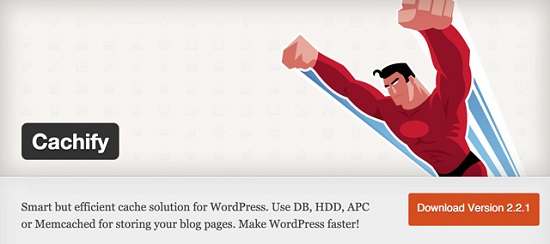How To Improve Your Ranking: 5 Quick SEO Tips
Your website has been online for quite a while now, but you are, however, not happy with its ranking? You are asking yourself what you can do to rank on the first page rather than the second one? Or how to get from the bottom of page 1 to the top? This is not as difficult as you may think. All you need to do is follow some quick tips and implement them as good as possible. Then your ranking will improve almost by itself. We will show you five simple tips to boost your website.


 Highlighting a search result with Rich Snippets could look like this:
Highlighting a search result with Rich Snippets could look like this:

 The second paragraph has a “More about the topic” box that tempts the user to read more about the topic and spend more time on the site. The “Current topics” box on the right-hand side of the article is also a useful feature.
Spiegel Online:
The second paragraph has a “More about the topic” box that tempts the user to read more about the topic and spend more time on the site. The “Current topics” box on the right-hand side of the article is also a useful feature.
Spiegel Online:
 On the left-hand side of the article, you can find essential interaction features like the “Topic” box that provides all links to the topic (here: Pegida) and a video below.
On the left-hand side of the article, you can find essential interaction features like the “Topic” box that provides all links to the topic (here: Pegida) and a video below.
 Before we enter the world of WordPress optimization, here's our own extensive collection of more than 40 tools every SEO chevalier should definitely check out.
To improve the loading performance of your WordPress website, just follow the short tips below. You should start with testing the initial state of your website with the Google PageSpeed Insights Tool.
Before we enter the world of WordPress optimization, here's our own extensive collection of more than 40 tools every SEO chevalier should definitely check out.
To improve the loading performance of your WordPress website, just follow the short tips below. You should start with testing the initial state of your website with the Google PageSpeed Insights Tool.
 Download Cachify from WordPress.org
Note that should you use a CDN WP Super Cache or W3 Total Cache are better choices as Cachify does not cooperate with offsite URLs.
Tip3: Bundle and compress JavaScript and CSS
Another plugin bundles CSS and Javascript files, and compresses the bundled files as much as possible. The result is that less and smaller files are loaded. This gives your website a dramatic performance boost. I recommend the small plugin Autoptimize.
Download Cachify from WordPress.org
Note that should you use a CDN WP Super Cache or W3 Total Cache are better choices as Cachify does not cooperate with offsite URLs.
Tip3: Bundle and compress JavaScript and CSS
Another plugin bundles CSS and Javascript files, and compresses the bundled files as much as possible. The result is that less and smaller files are loaded. This gives your website a dramatic performance boost. I recommend the small plugin Autoptimize.
 Download Autoptimize from WordPress.org
Download Autoptimize from WordPress.org

Tip 1: Internal Links
A good internal link structure is one of the things that is most likely to be forgotten when it comes to ranking. However, a good internal linking is very important as search engines can crawl websites with a good link structure better. In addition, a good internal linking is a real ranking booster. But: the way, how internal links are set, is essential. A well-meant breadcrumb navigation falls too short. How to set internal links:- Link subpages from as many subpages as possible.
- Link them from within the text. These links have more power than links from the navigation or footer.
- Link subpages with the link text you want the page to be found by. This is a clear signal for Google. And don’t forget the link title as this is also important for Google.

Tip 2: Improve Your Content
I know, this sounds pretty banal, but it is important enough to take the risk of sounding trivial. Imagine you are the one searching for something and encountering your website. What would you expect from it? Does it meet your expectations? Does it help you in solving a problem? Here are some tips and suggestions to improve the content:- Check your content from different perspectives. Is it problem-solving? Is there something about any potential case?
- Google your topics and pay attention to questions. Can your website answer these issues?
- Avoid deserts of text. Instead, jazz up your articles with pictures, graphics, and videos. Have you done this already?
Tip 3: Enhance the Click Rate in the Search Results
A good ranking will get you more clicks, right? If your website doesn’t have a good ranking yet but a striking number of clicks, this is a signal for Google: Your content must be relevant for the entered keyword. This results in a better ranking. How to improve the click rate:- Rephrase titles and description. They should make users want more and practically “force” them to visit your website. You could describe a problem and offer a solution. Keep in mind that your site should then meet these expectations.
- Use special characters for titles or descriptions. This makes your entry stand out from the mass and attracts attention. See example 1.
- You can also use Google Rich Snippets to highlight your entry. Easy to use and applicable to almost every website are “feedbacks”. See example 2.
 Highlighting a search result with Rich Snippets could look like this:
Highlighting a search result with Rich Snippets could look like this:

Tip 4: Enhance Interaction
Not only the click rates but also the bounce rate and the time spent on the site are relevant indicators. As Google increasingly pays more attention to these indicators, you should optimize them. Both indicators can be improved by an increased interaction. This means nothing more than that a visitor browses through your website. Good examples are the German news sites T-Online.de and Spiegel.de T-Online: The second paragraph has a “More about the topic” box that tempts the user to read more about the topic and spend more time on the site. The “Current topics” box on the right-hand side of the article is also a useful feature.
Spiegel Online:
The second paragraph has a “More about the topic” box that tempts the user to read more about the topic and spend more time on the site. The “Current topics” box on the right-hand side of the article is also a useful feature.
Spiegel Online:
 On the left-hand side of the article, you can find essential interaction features like the “Topic” box that provides all links to the topic (here: Pegida) and a video below.
On the left-hand side of the article, you can find essential interaction features like the “Topic” box that provides all links to the topic (here: Pegida) and a video below.
Concretely: Which Elements Really Help
There are certain things that increase the time spent on the site and reduce the bounce rate. It is imperative that these items are placed close to the article. They probably work best within the article. These simple things can have a significant effect:- A “More about the topic” box
- A video
- A picture gallery
- A survey
- Links to other articles
Tip 5: Loading Performance – All You Need Is Speed
There are so many reasons to improve the loading performance of a website with the main one being the visitor of the website followed by Google.- The website performance is an official ranking indicator for Google. From an objective point of view, it is also a ranking indicator for visitors. The faster the information is loaded, the higher is the chance that visitors browse sub pages of your website and spend more time. This doesn’t go unnoticed by Google and improves your ranking.
- The loading performance also has influence on the Google Adwords Quality Score.
- Many big websites like Amazon, Walmart, or Firefox test the effects of the loading performance on their business. These tests have always proven that a better performance directly influences sales.
 Before we enter the world of WordPress optimization, here's our own extensive collection of more than 40 tools every SEO chevalier should definitely check out.
To improve the loading performance of your WordPress website, just follow the short tips below. You should start with testing the initial state of your website with the Google PageSpeed Insights Tool.
Before we enter the world of WordPress optimization, here's our own extensive collection of more than 40 tools every SEO chevalier should definitely check out.
To improve the loading performance of your WordPress website, just follow the short tips below. You should start with testing the initial state of your website with the Google PageSpeed Insights Tool.
3 Quick Tips for a Better WordPress Website Performance
If you want more tips around WordPress for Admins visit our article here. Tip 1: Activate compression and caching through .htaccess Activate the compression and browser caching in the .htaccess file on your server (or web hosting package). Add the following code to the .htaccess file in the root directory of the server.
################### Activate compression ######
AddOutputFilterByType DEFLATE text/plain
AddOutputFilterByType DEFLATE text/html
AddOutputFilterByType DEFLATE text/xml
AddOutputFilterByType DEFLATE text/css
AddOutputFilterByType DEFLATE application/xml
AddOutputFilterByType DEFLATE application/xhtml+xml
AddOutputFilterByType DEFLATE application/rss+xml
AddOutputFilterByType DEFLATE application/javascript
AddOutputFilterByType DEFLATE application/x-javascript
################# Activate browser caching ######
ExpiresActive On
ExpiresDefault "access plus 1 month 1 days"
ExpiresByType text/html "access plus 1 month 1 days"
ExpiresByType image/gif "access plus 1 month 1 days"
ExpiresByType image/jpeg "access plus 1 month 1 days"
ExpiresByType image/png "access plus 1 month 1 days"
ExpiresByType text/css "access plus 1 month 1 days"
ExpiresByType text/javascript "access plus 1 month 1 week"
ExpiresByType application/x-javascript "access plus 1 month 1 days"
ExpiresByType text/xml "access plus 1 seconds"
 Download Cachify from WordPress.org
Note that should you use a CDN WP Super Cache or W3 Total Cache are better choices as Cachify does not cooperate with offsite URLs.
Tip3: Bundle and compress JavaScript and CSS
Another plugin bundles CSS and Javascript files, and compresses the bundled files as much as possible. The result is that less and smaller files are loaded. This gives your website a dramatic performance boost. I recommend the small plugin Autoptimize.
Download Cachify from WordPress.org
Note that should you use a CDN WP Super Cache or W3 Total Cache are better choices as Cachify does not cooperate with offsite URLs.
Tip3: Bundle and compress JavaScript and CSS
Another plugin bundles CSS and Javascript files, and compresses the bundled files as much as possible. The result is that less and smaller files are loaded. This gives your website a dramatic performance boost. I recommend the small plugin Autoptimize.
 Download Autoptimize from WordPress.org
Download Autoptimize from WordPress.org
Conclusion
If you follow these easy tips, your Google ranking should improve immediately. Start implementing what really matters for SEO by setting internal links and checking your content.Related Links
- About Rich Snippets structured data
- 50 Best SEO Optimized WordPress Themes
- Entity Code – A Clear and Quick Reference to HTML Symbol Entities Codes
- Google: Using site speed in web search ranking
- Google: Understanding landing page experience
- Google PageSpeed Insights
- Download Cachify from WordPress.org
- Download Autoptimize from WordPress.org

I agree with you but make sure you content should be fresh, unique and interestinh. Also add content on a regular basis. This is the also the great way to boost your ranking.
Great tips, thanks for the article! The code for Active Compression is especially useful! WP Super Cache is also a good caching plugin for WordPress.
thanks for the nice overview
Hi there. Thank you for these quick tips. I discovered internal linking truly is very important on SEO efforts. Regards, Matija
Nice tips! i improve my site speed from 67/100 to 73/100 just installing Autoptimize Plugin.
Thanks.
Really nice article, thanks for sharing, for “Tip 5” i would suggest the help of PageSpeed Insights, a really useful speed test page by Google.
Best regards
Samuele
Really good post. This tips helps to increase our website page ranking. Thanks for sharing.